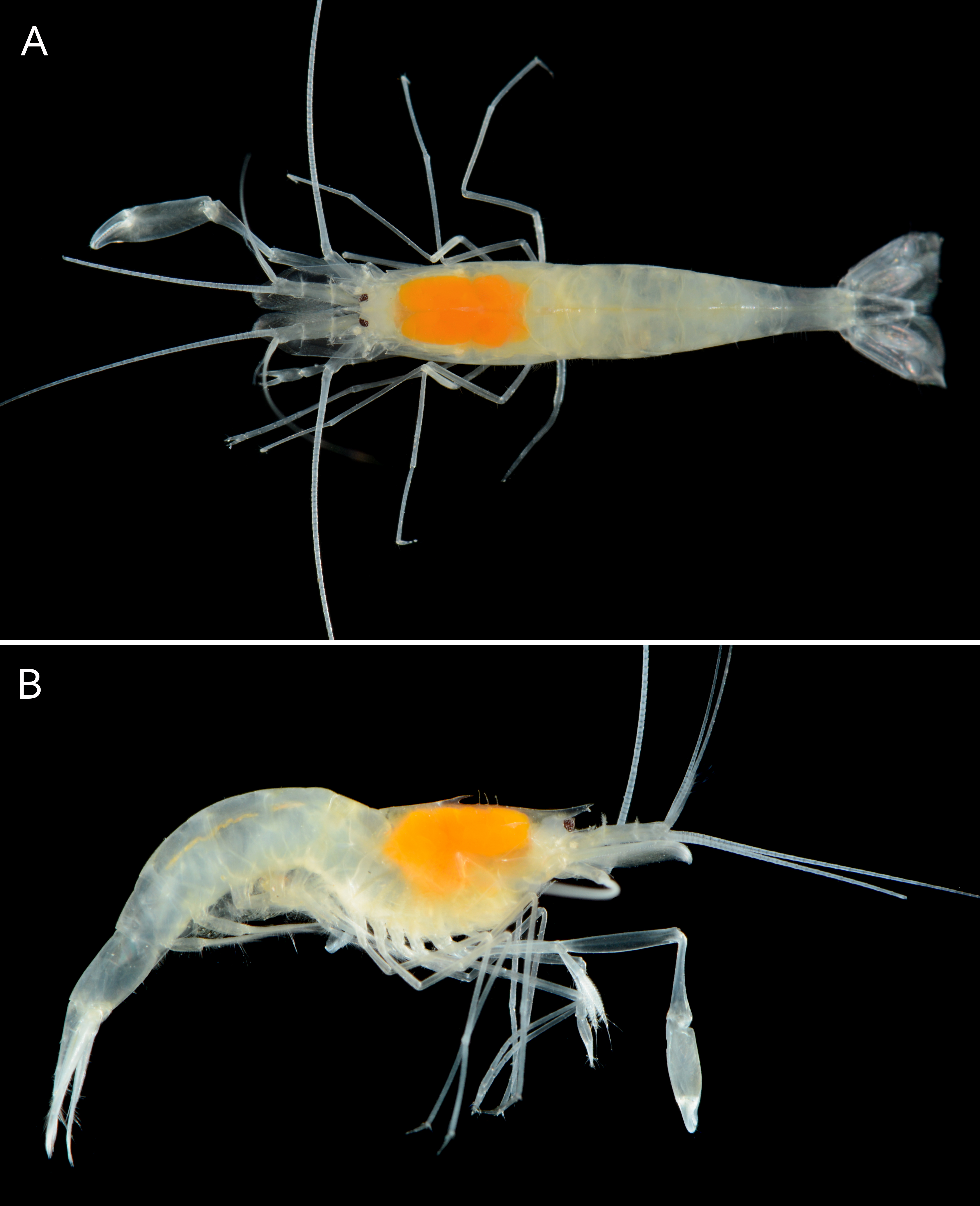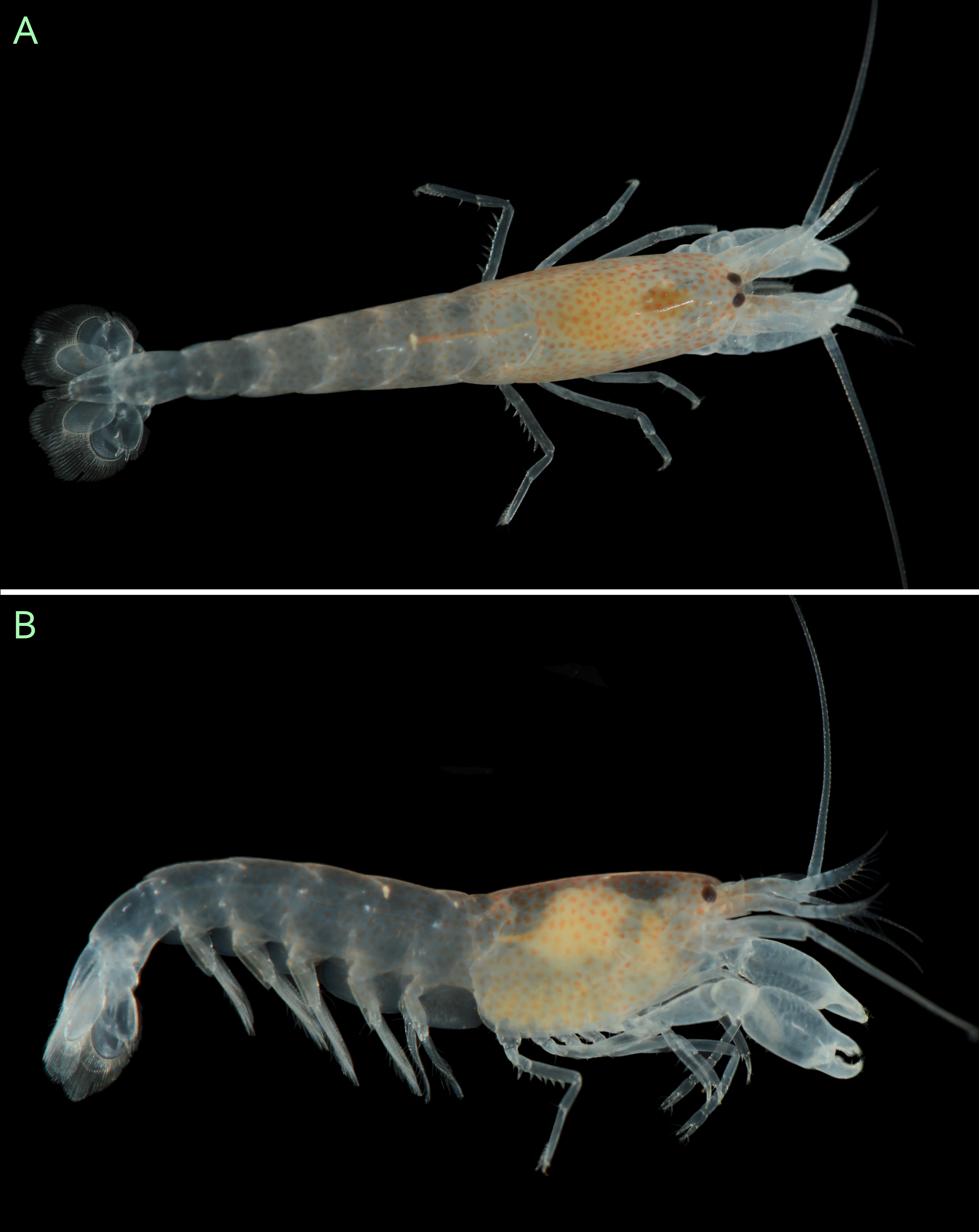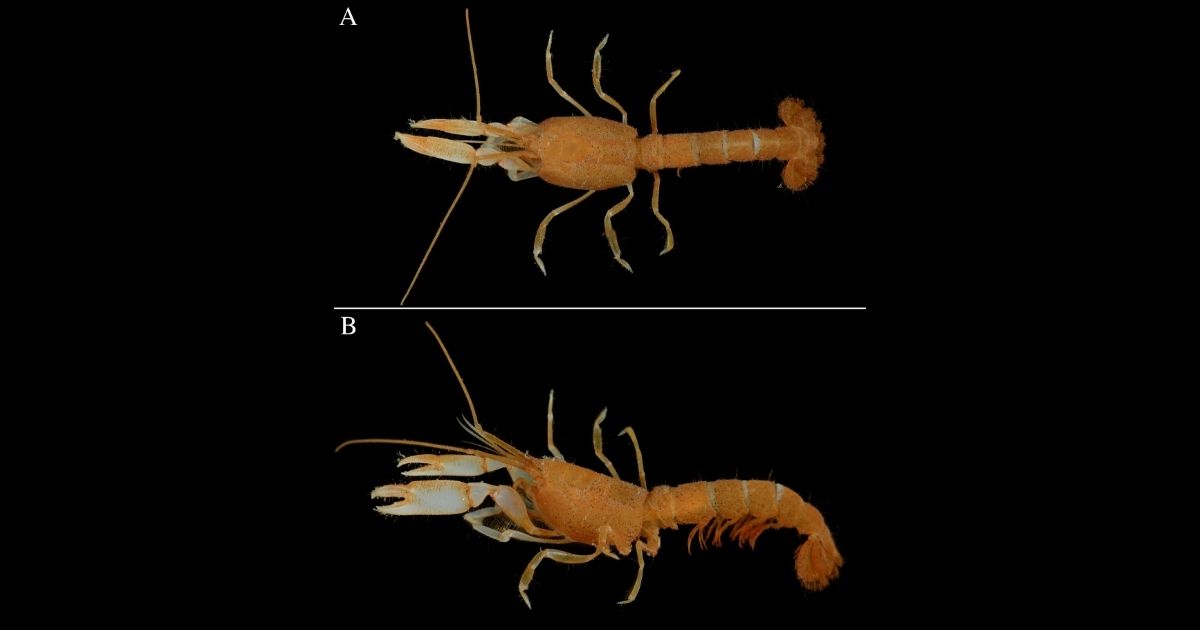Named for Smithsonian Tropical Research Institute and Post-doctoral Fellow Matthieu Leray
John Steinbeck wrote Log From the Sea of Cortez in 1951, his chronicle of an expedition with marine biologist Ed Ricketts along the coast of California and Mexico. Ricketts named several of the many new marine animals they found after Steinbeck, his friend and patron of the expedition. On a similar expedition in February 2019 to Panama's Coiba National Park in the Pacific Ocean, marine biologists from the Smithsonian Tropical Research Institute (STRI) discovered several new, undescribed animals, genera and species never seen or photographed before, nearly every day.
 Unesconia coibensis
Unesconia coibensis
Matthieu Leray, post-doctoral fellow at STRI, invited two zoologists, STRI Research Associate Arthur Anker and Paulo Pachelle, to join the expedition to Coiba. Both are based in Brazil and specialize in the identification of decapod crustaceans, such as shrimps, crabs, hermit-crabs and lobsters.
Anker named one of the new genus and species of mud-shrimps in the family Laomediidae, Strianassa lerayi, to honor both the Smithsonian in Panama and his friendship with Leray. The generic name comes from the abbreviation of the Smithsonian Tropical Research Institute and the last six letters of a morphologically similar genus, Axianassa. Since "anassa" is derived from the ancient Greek word for queen, the name of the new genus literally means "Queen of STRI."
"Arthur was able to describe three new genera and one new species of shrimp based on a week of collecting in Coiba National Park," Leray said. "This is a phenomenal contribution to our knowledge of just one group of organisms. We are in the process of identifying what we found and will announce more new species soon."
 Triacanthoneus blanca
Triacanthoneus blanca
The team found the only known specimen of this new mud shrimp under a rock while snorkeling in shallow waters in the archipelago.
The site of their discovery is only a few kilometers away from the newest STRI research station on Coibita Island. Anker and Pachelle also found a small clam with a highly reduced shell, a huge mantle with papillae and long extensible foot, popularly known as a "yoyo clam." These unusually mobile and active bivalve mollusks live in symbiosis with burrowing mantis shrimps. This is the first known yoyo clam from the eastern Pacific and represents a new species of the genus Divariscintilla. Amazingly, the site where they found a single specimen of the clam is the boat "parking area" of the STRI station at Coibita. The species is now being studied by a Japanese team, all specialists in this taxonomically difficult group of mollusks.
"We are thrilled by the potential of our newest research station on Coibita," said Oris Sanjur, acting director at STRI. "The tropical eastern Pacific is still largely unexplored by specialists with knowledge of these, less obvious, organisms. At our Bocas del Toro Research Station, the director, Rachel Collin, began a program called Training in Tropical Taxonomy that brings specialists from around the world to Panama. In the past 10 years, they have identified more than 75 new species, many of which are only found in Panama. We hope to foster similar programs based at the Coibita Station."
The expedition was funded by STRI and the Gordon and Betty Moore Foundation as part of a much larger project called The Role of Microbes in Shaping Tropical Ecosystems. The aim of that project is to better understand how microbial communities evolve by comparing the microbes on "sister species," animals that were separated when the rise of the Isthmus of Panama divided one ocean into the Atlantic and Pacific, millions of years ago. Scientists want to better understand how closely associated microbes are with their hosts and the importance of environment and other factors in determining their presence.
The researchers thank the Coiba National Park staff and Panama's Ministry of the Environment, MiAmbiente, for the collection permits that make new discoveries like this possible.
"We collected Pachelpheus pachyacanthus and a new species of clam at the beach in Coibita in a meter of water at low tide, which to me says a lot about how rich, unique and incredibly understudied the marine fauna of Coiba National Park (and the Tropical Eastern Pacific) is," Leray said.
 Pachelpheus pachyacanthus
Pachelpheus pachyacanthus
In addition to Strianassa lerayi, other new shrimps were discovered by the STRI team working in Coiba in 2019 and described by Arthur Anker:
- Pachelpheus pachyacanthus: New genus and species of burrow-dwelling alpheid shrimp discovered on Isla Racheria (Coibita) near the boat parking area; the genus was named after Anker's friend and co-collector, Pachelle. Unesconia coibensis: New genus and species of miniature, sponge-associated palaemonid shrimp; the genus was named after UNESCO, which declared Coiba as World Heritage Site.
- Triacanthoneus blanca: Another new alpheid shrimp species named after Blanca Figueroa a former post-doc in staff scientist Aaron O'Dea's lab at STRI.
The researchers also add Leslibetaeus coibita, also a new genus and species, which was described by Anker and collaborators in 2005 when Anker was a post-doctoral fellow at STRI. The species name indicates that it was collected in Coibita, right in front of the station.
"New microbes are a dime a dozen," said Bill Wcislo, senior staff scientist and microbiome project leader along with Jonathon Eisen at the University of California Davis. "But several new host genera in a short time collecting in just one group of invertebrates. That is something remarkable. And a new species named for STRI and for Matt Leray is spectacular! It is just the tip of the iceberg for the Smithsonian's newest crown jewel."
By Smithsonian Tropical Research Institute
Journal Reference:
Arthur Anker. Strianassa lerayi gen. et sp. nov., a new laomediid mud-shrimp from the eastern Pacific, with new records of Axianassa ngochoae Anker, 2010 and Heteroaxianassa heardi (Anker, 2011) in the western Pacific (Malacostraca: Decapoda:. Zootaxa, 2020; 4820 (3): 523 DOI: 10.11646/zootaxa.4820.3.6



